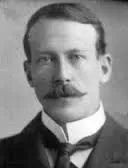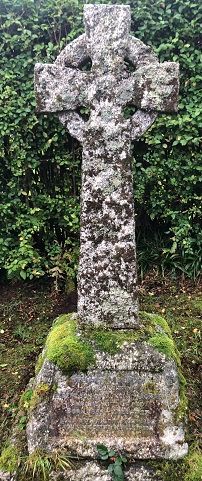Stuart MacRae

From his name the assumption has to be it is that of a Scot, indeed a Highlander. But that was not the case, at least not in international footballing terms. He is the other - chronologically the second - "English Gentleman" to feature on the Highland and Moray Trail, and for a single reason shared with his "compatriot". Despite being the son of two Scots, one mainland, one island, his father an army surgeon and also the Clan Chieftain of MacRaes of Conchra and also despite a Scottish secondary education at Edinburgh Academy, birth in 1855 but in West Bengal had by the then rules made Stuart Macrae a Sassanach, a Saxon.
However, in terms of sport for the young Stuart Edinburgh had meant rugby. In his final year he captained the Academicals team, playing at Stocksbridge. Indeed there is no sign that football came into his life until a move in the mid-1870s to England. By 1881 he was living in Newark in Nottinghamshire, where his sister had married and the place that would be his home for much of his life. There he began work as a Merchant's Clerk but became increasingly involved in the beer malting business, that of his brother-in-law, Thorpe & Co.. And thus it must have been again by the mid 1870s that his involvement with association football began, first with Newark and then Notts County. It would take him to playing for the Corinthian Club and five English caps in 1883 and 1884, firstly, already aged twenty-seven, as one of the half-back pairing of the time in a 2-2-6, and finally as the centre-half in England's first utilisation of the 2-3-5 Pyramid.

In fact there might have been more caps but for withdrawal from a sixth because of injury and then a severe leg-break, which would finally bring an end to his footballing career. It did not stop him being a founder, first president and captain until his death of the Newark Golf Club nor in him becoming Managing Director first of said Thorpe & Co. and then Gilstrap, Earp, when it bought out Thorpes. That in turn would lead to a move to London, where he and his family lived on Portman Sq.. And ii was there he died, aged seventy-one, in 1927.
But MacRae was not to be buried in London or even in England. His coffin was put on the train to Inverness, transferred onto the one to Kyle of Lochalsh and carried from there by his clansmen, as befits a man who was by then clan chieftain in his own right, to be buried with family, father, mother, sister and brother, and beneath the Celtic Cross in the clan cemetery at Clachan by Loch Duich.
Birth Locator:
Umballa, West Bengal, India/Bangladesh
Residence Locator(s):
1881- Coddington Hall, Newark Map
1891 - St. James, Piccadilly, London/Newark, Notts
1901 - Handley House, Newark, Notts
1927 - 29, Seymour St., Portman Sq., London
Grave Locator:
The Clachan Duich Burial Ground, Highland
Other Sources:
Back to the Highland and Moray Trail
or the SFHG Home page